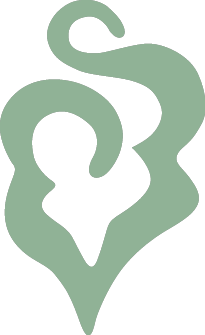A colleague recently pointed to the importance of healing arts practitioners not generalizing from our own experiences in providing care for our clients. Instead, we look to the evidence. Even that can be tricky if you’re not trained to read the quality of the evidence in question. Most of us are not.
Add to the mix a fast-growing plethora of approaches to care and we can QUICKLY get in the weeds.
AAIT is an EMERGING approach with promising results. There is a theoretical and research foundation for the approach, nothing yet that is DIRECTLY related.
Nonetheless, evidence matters. As the foundation is being laid for research, we aren’t there yet. In the meantime, it’s one of the reasons for the phases of AAIT that allow for and encourage the client to rely on the evidence of their own personal experience.
Three main dynamics comprise a simple approach to this kind of evidence:
- Identify the goal, a clear contract for change
- Facilitate integration
- Direct awareness for consistent and comprehensive followup about the problem and goal
Through COLLABORATIVE AGREEMENT and DIRECTED AWARENESS, we weave a sustained means of ensuring we are addressing the goals our clients came to us to achieve. This is iterative. It’s not like we have this conversation once and we’re done. No, it happens almost every session.
It’s a high bar. And it’s parsimonious. Zivorad is fond of saying “simplicity is close to perfection.”
How have you found this approach to inform your practice? And how else do you stay on track with ensuring the BEST care for your clients?



Thanks a lot for sharing this with all of us you actually know what you are talking about! Bookmarked. Kindly also visit my site =). We could have a link exchange arrangement between us!
http://www.oprolevorter.com/
Very well written post. It will be valuable to anyone who utilizes it, as well as myself. Keep up the good work – can’r wait to read more posts.
http://www.yspanel.com
Excellent read, I just passed this onto a friend who was doing some research on that. And he just bought me lunch since I found it for him smile Therefore let me rephrase that: Thanks for lunch!
https://www.eyestemcellcenter.com/
hey there and thank you for your information – I have definitely picked up something new from right here. I did however expertise several technical issues using this site, as I experienced to reload the site a lot of times previous to I could get it to load correctly. I had been wondering if your web host is OK? Not that I’m complaining, but slow loading instances times will often affect your placement in google and could damage your high-quality score if ads and marketing with Adwords. Anyway I am adding this RSS to my e-mail and can look out for a lot more of your respective interesting content. Make sure you update this again very soon..
https://anabolisants.shop/
I’m impressed, I have to say. Actually hardly ever do I encounter a weblog that’s both educative and entertaining, and let me let you know, you could have hit the nail on the head. Your concept is outstanding; the issue is one thing that not sufficient people are speaking intelligently about. I’m very completely satisfied that I stumbled across this in my search for something referring to this.
https://best-globalpharma.org/
Wohh precisely what I was searching for, thanks for posting.
https://www.gewichtverlieren.shop/
hello!,I like your writing very much! share we communicate more about your article on AOL? I require an expert on this area to solve my problem. Maybe that’s you! Looking forward to see you.
https://fortia.org/it/index.html
Your point of view caught my eye and was very interesting. Thanks. I have a question for you.
Thanks for sharing. I read many of your blog posts, cool, your blog is very good.
I don’t think the title of your article matches the content lol. Just kidding, mainly because I had some doubts after reading the article.
Thank you for your sharing. I am worried that I lack creative ideas. It is your article that makes me full of hope. Thank you. But, I have a question, can you help me?